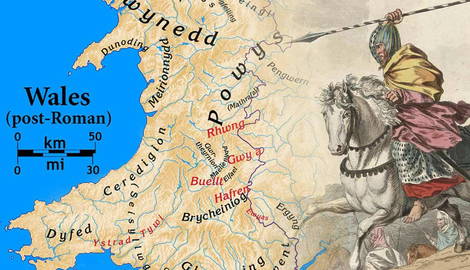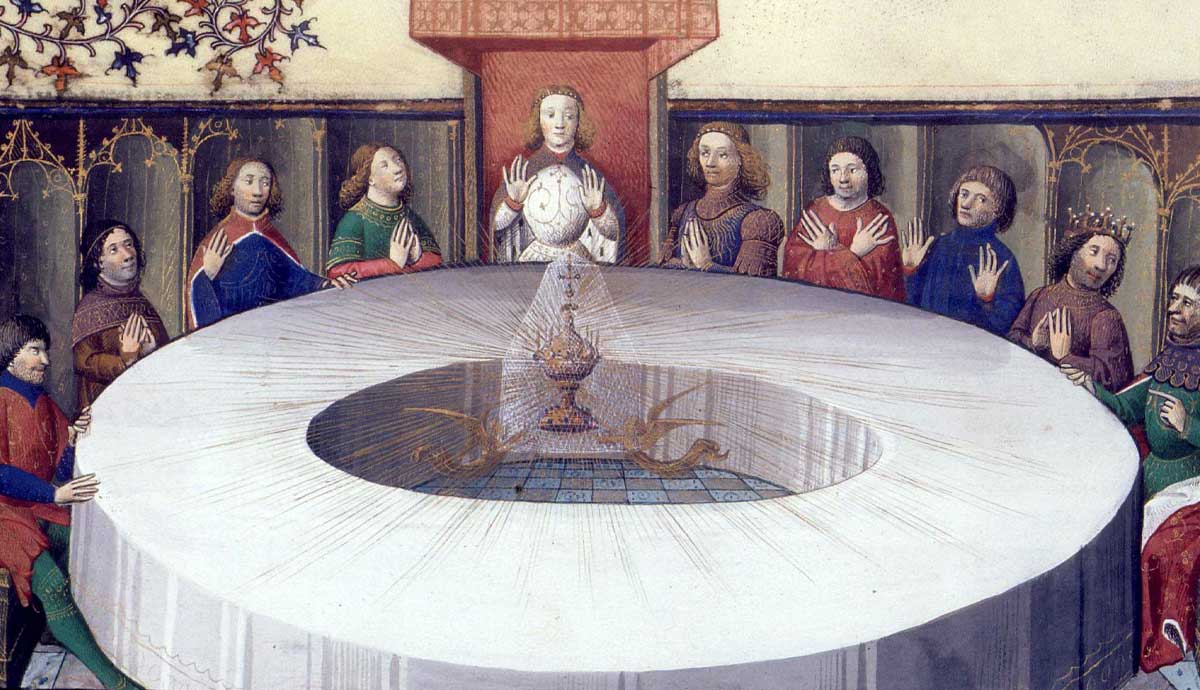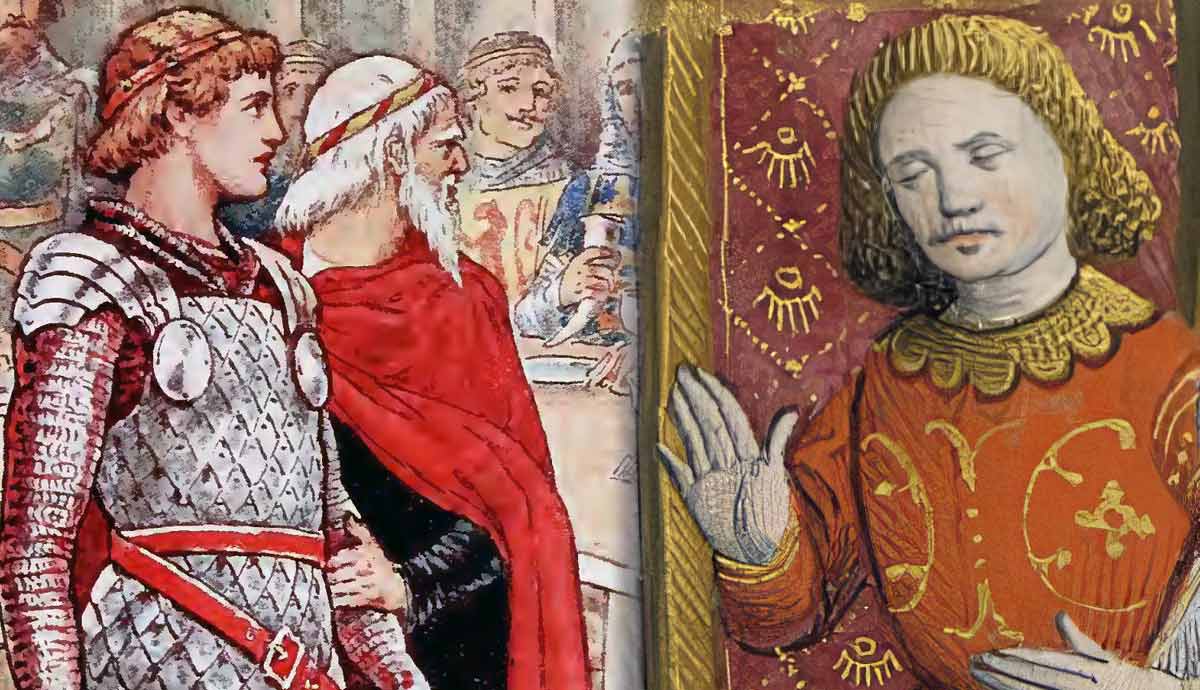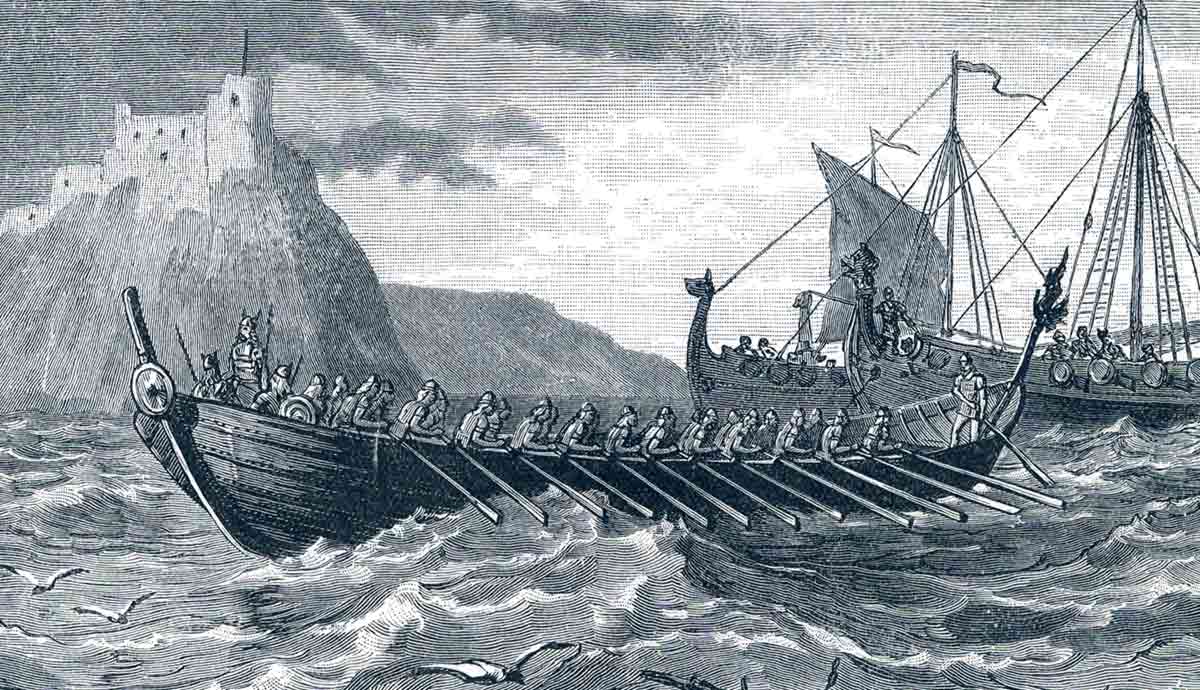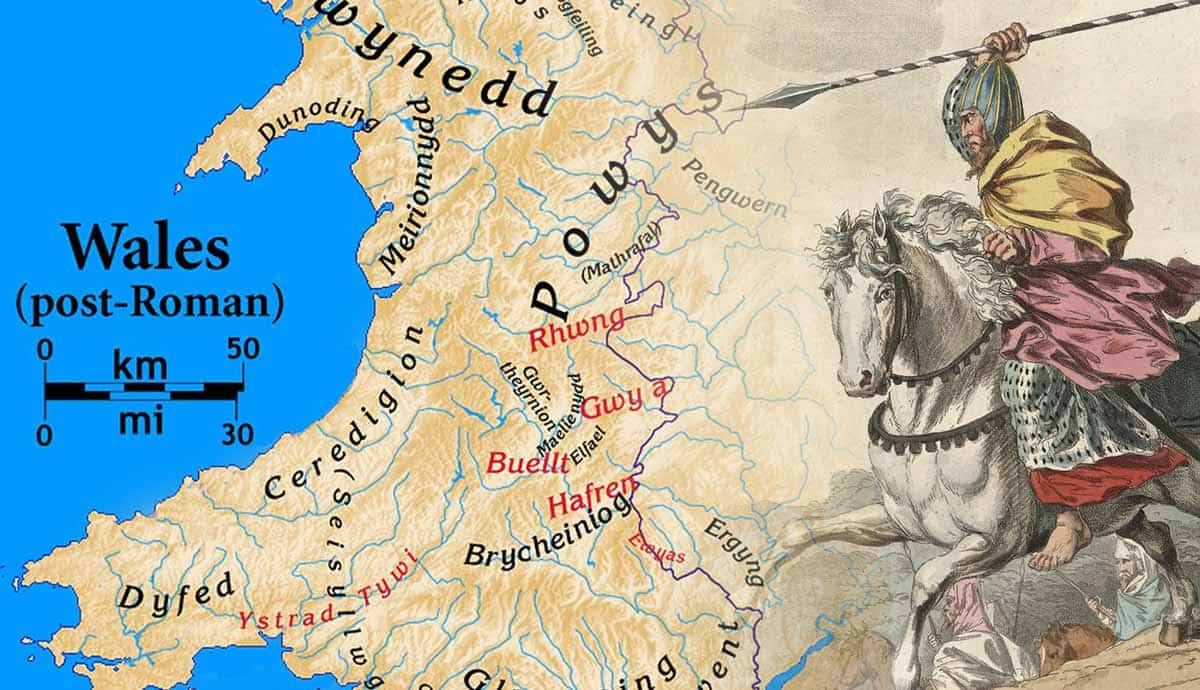
It is well known that large numbers of Irish settlers migrated to western Britain, especially western Wales, during the early Dark Ages. This was mostly after, but some also before, the fall of Roman Britain. They managed to establish a relatively long-lasting kingdom in Dyfed, southwest Wales, and an even more significant Irish kingdom at Dal Riada in western Scotland. However, it appears that there was another Irish kingdom, albeit only a temporary one, in Dark Age Britain, which has been largely forgotten today.
The Life of Saint Efflam

The Historia Brittonum, written in c. 830, informs us that the Irish settled various parts of western Britain in the late Roman and early Post-Roman periods. Medieval Irish texts corroborate this. Archaeology further confirms it, showing the presence of Irish inscriptions on memorial stones that were evidently used by the elite class in various parts of Wales.
It is in this historical context that the Life of St Efflam is set. This is a hagiography, or religious biography, of a figure known as Saint Efflam. As hagiographies go, this is a relatively early one, being written in either the 11th or the 12th century. The account claims that Efflam was the son of an Irish king. It leaves the name of this king unstated, and it also does not specify which kingdom he ruled over. Fortunately, there is a Breton ballad that provides some extra information. It states that Efflam’s father was a king of Demetia. Brittany was an area in which Efflam was influential, which is why we find information about him from there.

Demetia is the Latin name for Dyfed, the kingdom of southwest Wales. As already mentioned, this was a Dark Age Irish kingdom, at least until c. 500. However, the term “Demetia” was sometimes used to refer to South Wales in general. This is important since there was another Irish kingdom in South Wales in the Dark Ages. This was the kingdom of Brycheiniog. Its first king was Anlach, an Irish prince who had married a Brythonic princess named Marchell. Instead of being the son of one of the kings of Dyfed, Efflam could just as easily have been the son of Anlach.
Interestingly, this suggestion leads to the possibility that there was another Irish kingdom in Dark Age Britain, which has largely been forgotten. The reason is that the Life of St Efflam states that Efflam’s father fought against another Irish king. On the other hand, another version of his life, by Albert Le Grand, says that this other king ruled in Britain. Examining the available information about Anlach, this leads us to a very interesting conclusion.
Anlach: The Likely Father of Saint Efflam

Anlach is recorded in the Cognatio Brychan and the De Situ Brecheniauc as fighting against a king named Banadl of Powys. Eventually, the two kings made peace. At some point, Anlach sent his son, Brychan, to the court of King Banadl. Subsequently, Brychan had relations with Banadl’s daughter.
The reason that this is so interesting is because this is a very close match for what the Life of St Efflam says about Efflam’s father. As we have seen, since he was an Irish king but apparently based in South Wales, he can only have been a king of Dyfed or Brycheiniog. Anlach was a king of Brycheiniog. Just like Anlach, Efflam’s father is said to have warred against a king for years until eventually making peace. He then sent his son to his former enemy’s court, and this son then married that king’s daughter.
Given the strong similarities between these stories and the fact that they are set at the same time, we can likely identify Efflam’s unnamed father with Anlach. At least, no other attested king from that era is recorded as matching the description of Efflam’s father so well.
Was King Banadl of Powys an Irish King?

The reason that this is significant is because the early Life of St Efflam states that the enemy of Efflam’s father was an Irish king. If Efflam’s father really was Anlach, then this would mean that Banadl, the king of Powys who fought against Anlach, was apparently Irish. The fact that Albert Le Grand’s much later version of Efflam’s life states that Efflam’s father’s enemy ruled in Britain is consistent with this identification.
This is a fascinating conclusion since Powys is not normally included in considerations of the Irish kingdoms of Dark Age Britain. Is there any supporting evidence for the conclusion that Banadl of Powys was Irish? Interestingly, there are a number of online sources that state that Banadl was an Irish usurper. Yet despite this positive assertion, Banadl does not explicitly appear outside of the two aforementioned documents describing Anlach’s wars, and these documents do not call Banadl Irish. However, this does not mean that there is no evidence for this statement. In fact, there is good reason to believe it.

It is difficult to track down the source for the claim that Banadl was an Irish usurper. However, it appears that this ultimately comes from the identification of Banadl with a king mentioned in the Historia Brittonum. This king appears in that document with the name “Benlli.” For a number of reasons, the identification of these two kings does seem reasonable.
The account of Benlli is set during Germanus’ activities in Britain. As scholars have established, this was Garmon, the bishop of the Isle of Man, not Germanus of Auxerre, as popularly believed. Hence, Benlli evidently ruled in Powys in the late 5th or early 6th century. This would fit very well with Banadl, the enemy of Anlach.
As well as ruling at the same time and in the same place, their names are obviously similar. “Benlli” can reasonably be understood as a shortened form of “Banadl.” Many instances of such shortenings of names are seen in the medieval manuscripts. One attested variant of Benlli’s name, “Benty,” may well preserve the ‘d’ from the name “Banadl.”
The Irish Kings of Powys

Why has the identification of Benlli with Anlach’s enemy Banadl apparently led to the claim that Banadl was an Irish king? There are a number of reasons to believe that Benlli was Irish. For one thing, the account in which he appears in the Historia Brittonum heavily implies that Benlli and his subjects were pagan. Since Christianity had already spread throughout much of Britain by c. 500, this favors the conclusion that Benlli, King of Powys, was Irish rather than a native Briton.
Furthermore, in one manuscript version of the Historia Brittonum, King Benlli is actually said to have reigned in “Dalreatae” or “Dalrieta,” that is, Dal Riada. This is known to have been an Irish kingdom. Therefore, this manuscript evidently preserves a tradition that King Benlli was from that Irish kingdom. The presence of a king from Dal Riada so far south seems unusual. It may be related to the Welsh tradition that King Arthur fought Rhita Gawr in Gwynedd, northwest Wales, since Rhita is likely identifiable as Domangart Reti of Dal Riada.

There is yet more evidence that Benlli, and thus his apparent alter ego Banadl, was an Irish king. As we noted earlier, archaeology supports the Historia Brittonum’s claim that the Irish settled much of western and southern Wales. However, we find some of the same archaeological evidence in Powys. Just as we find apparently elite burial monuments inscribed with Irish ogham text in Dyfed, we find the same in Powys.
One example is the Wroxeter Stone. It is also known as the Cunorix Stone. It dates to the second half of the 5th century, possibly near the start of Benlli’s reign or even before it. It is dedicated to a certain Cunorix, described as the son of Maqui Coline. This is a form of a name later attested in Irish as Macc-Cuilinn. Wroxeter was a prominent and important Roman city in the territory of Powys. Hence, this inscription strongly supports the conclusion that Powys was ruled by an Irish elite class in this period.
The Forgotten Irish Kingdom of Powys in Dark Age Britain

In conclusion, although we cannot be dogmatic about it, the evidence does appear to support the conclusion that Powys was a generally forgotten Irish kingdom in Dark Age Britain. The Historia Brittonum presents us with a king of Powys named Benlli, who was evidently a pagan. Based on this and the manuscript, which makes him a king of Dal Riada, it would seem that he was Irish. This is supported by archaeological evidence for Irish elites in Powys in that same era.
However, we can also support this by arguing that Benlli should be identified as Banadl. Since they lived at the same time, ruled over the same territory, and had similar names, this identification seems likely. The fact that Anlach is recorded as fighting Banadl is significant in view of the argument that Anlach was Efflam’s father, who was recorded as fighting an Irish king in Britain. Even if these identifications are rejected, the aforementioned evidence concerning Benlli and the archaeology of Powys stands on its own.
